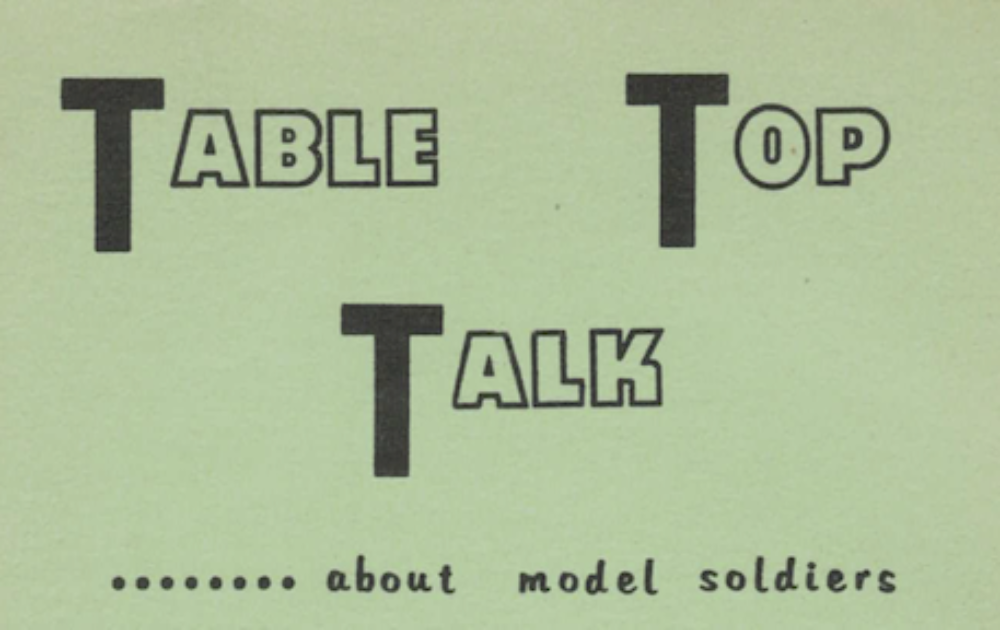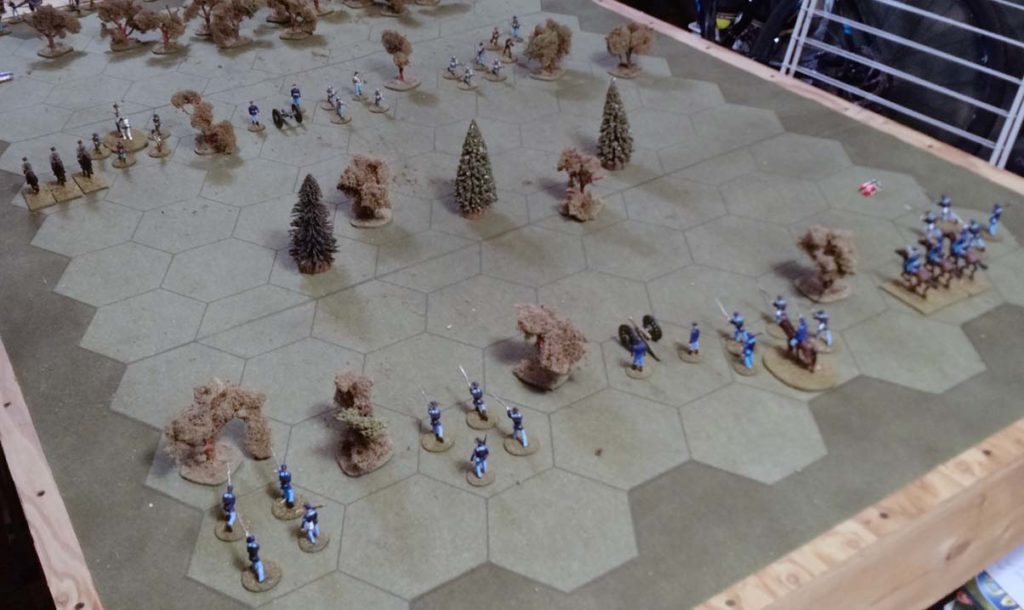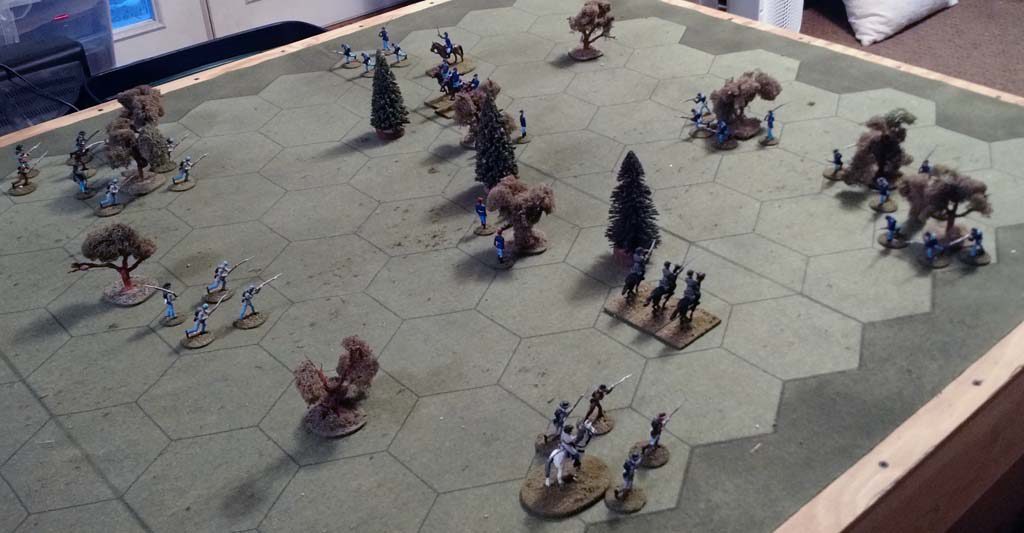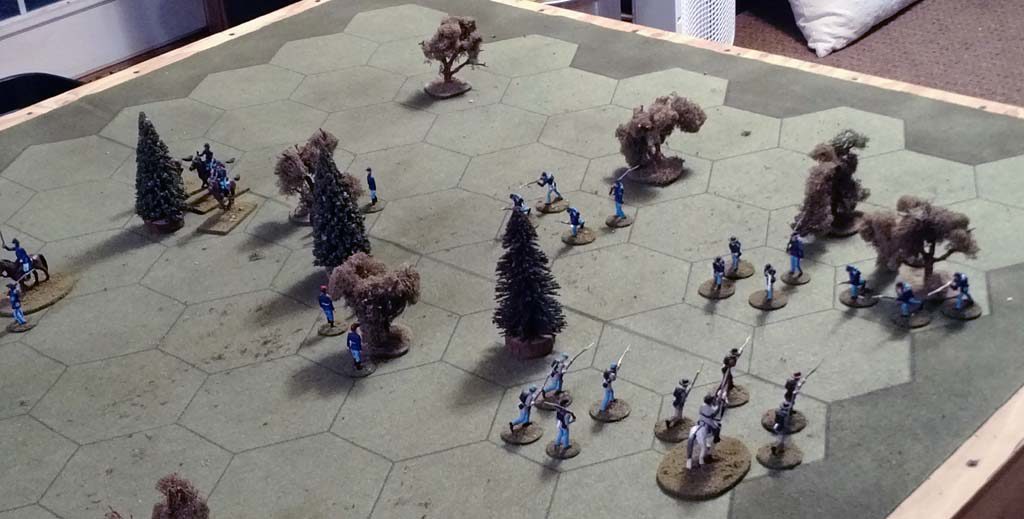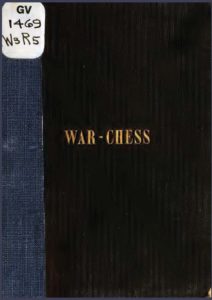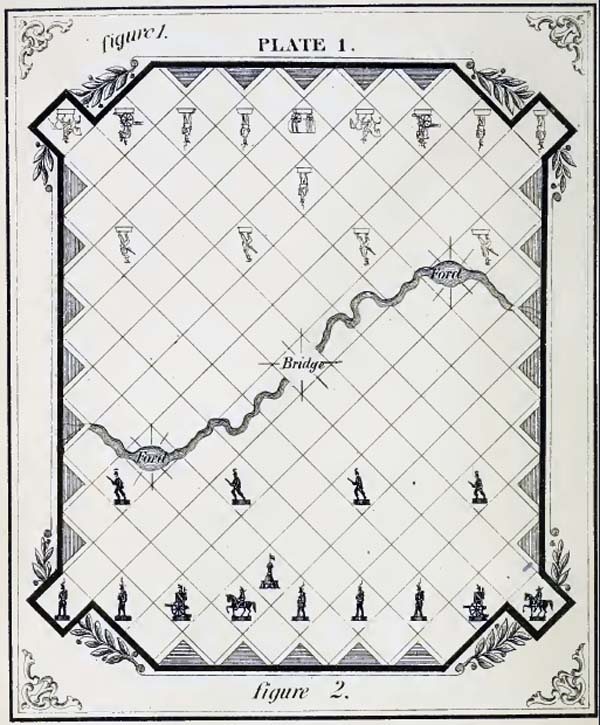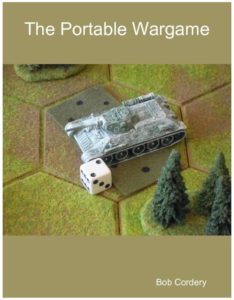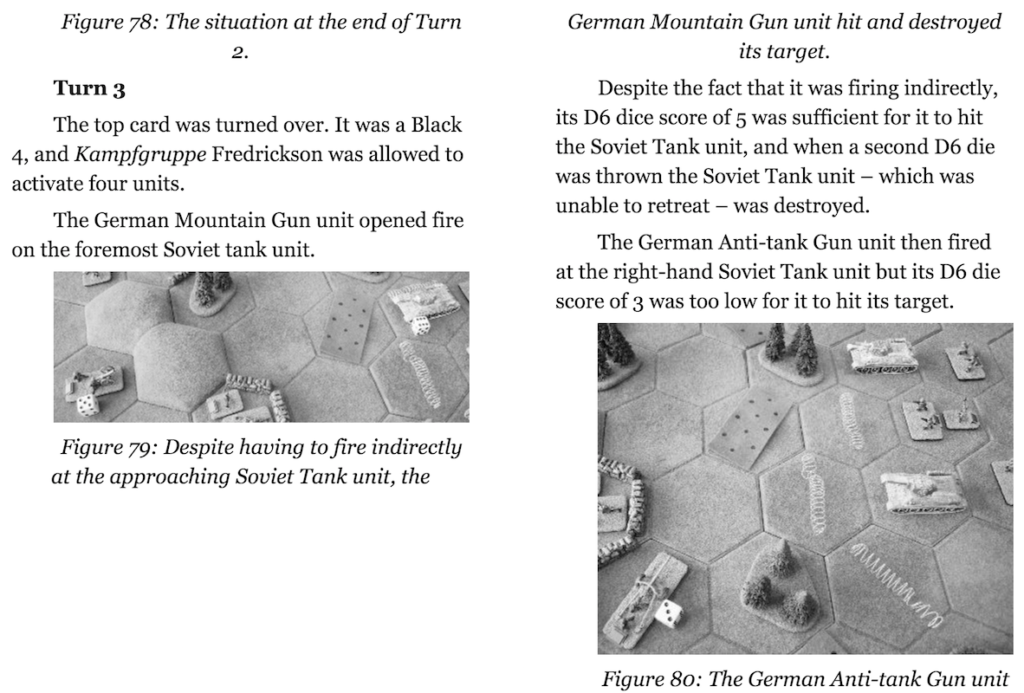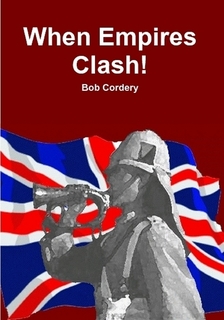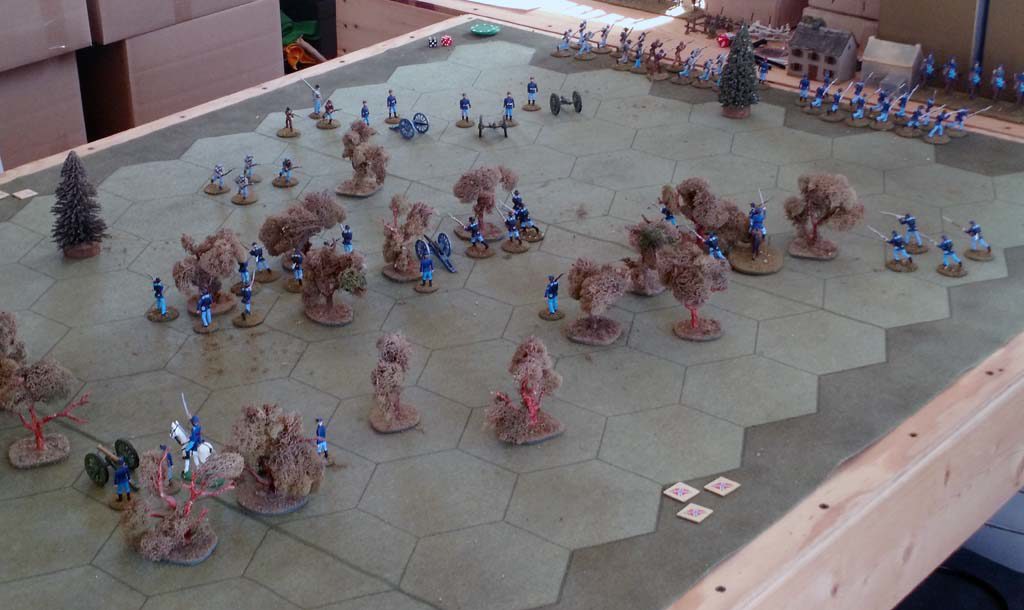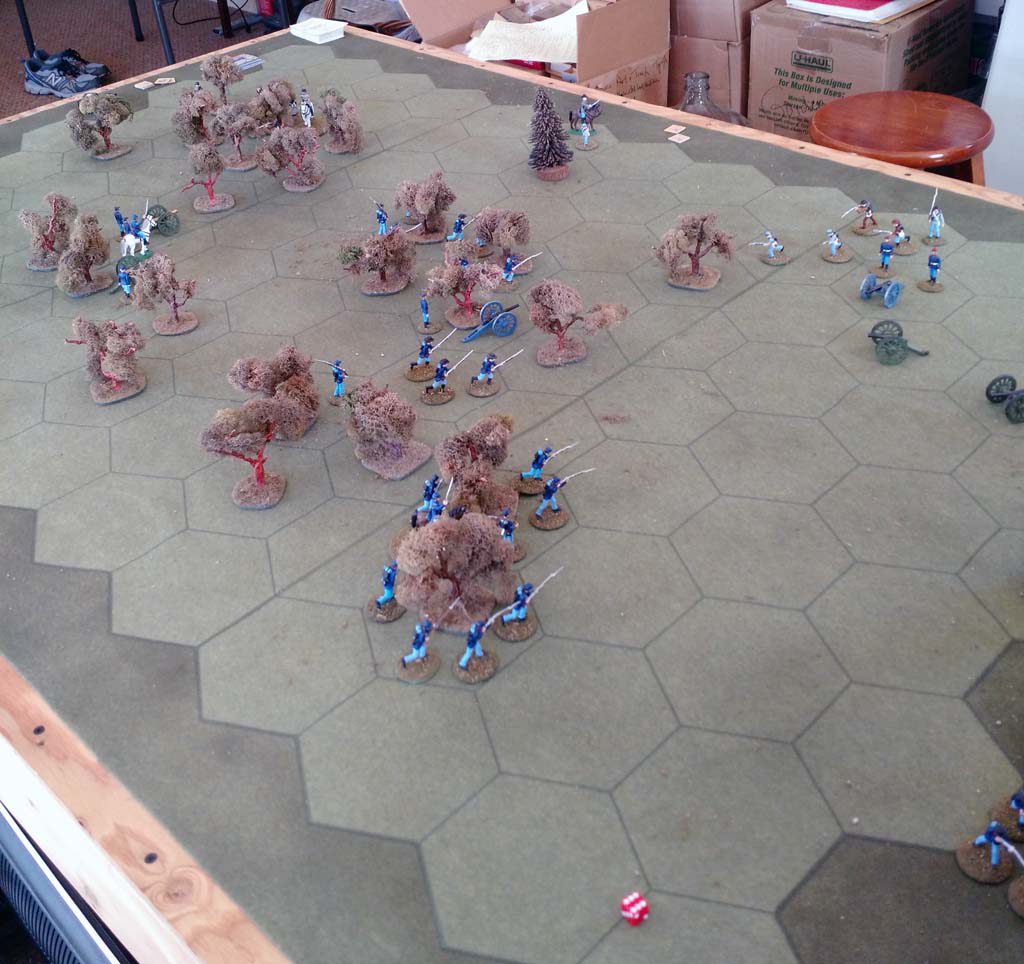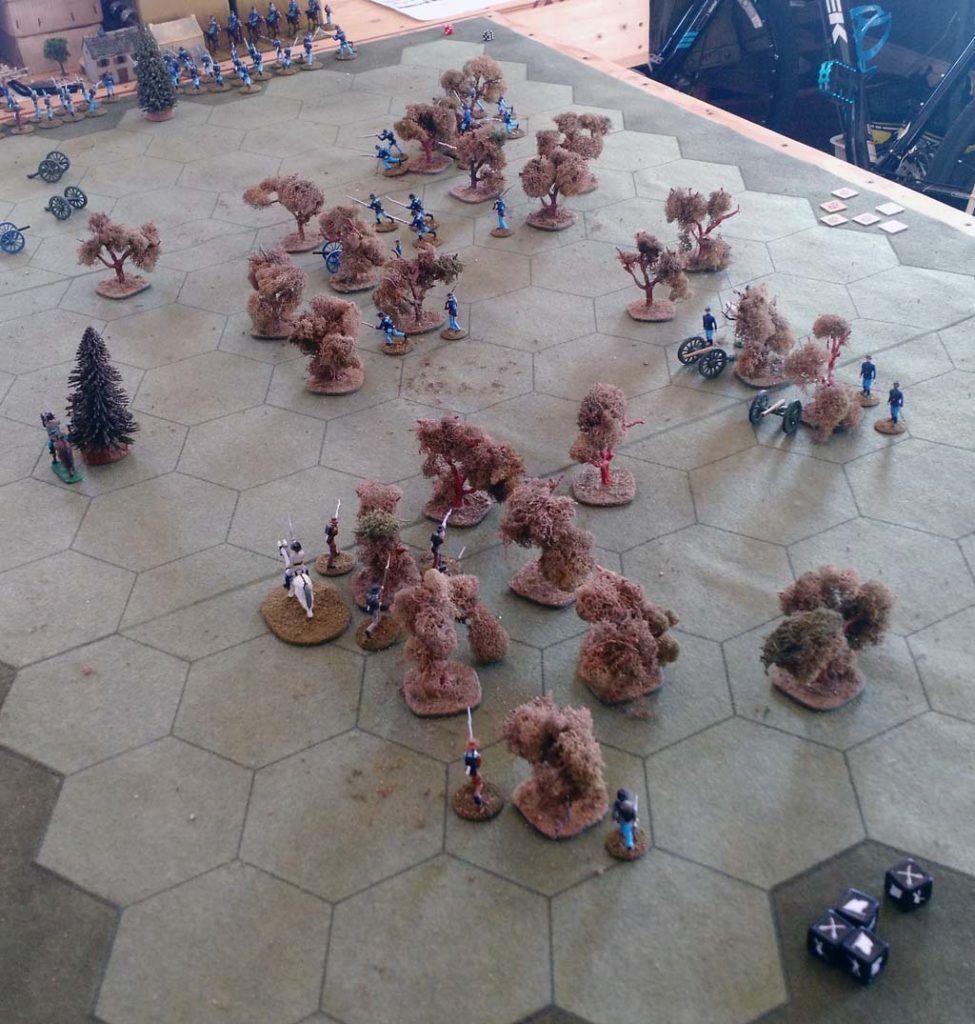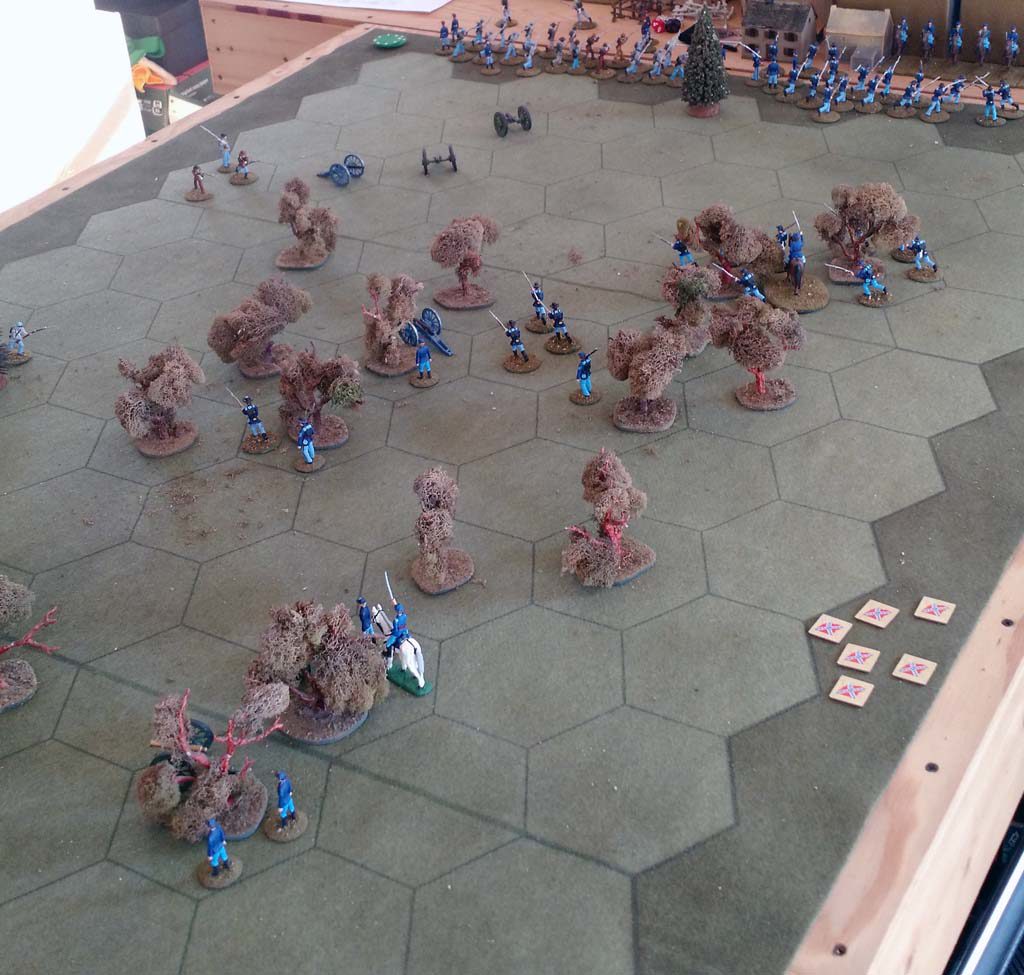I’ve been wanting to take The Portable Wargame out for a spins for some time now, but just never could figure out what I wanted to do. What figures did I already have that would fit the bill, what playing surface did I have…
Suddenly it hit me; right in front of my nose, 40mm Scruby American Ciivil War and my Hotz Command Mat! Bonus in that they were already out and on the table. Hex grid runs wrong way, but that was easy enough to remedy (ignore).
Nothing fancy for the scenario. Just went with balanced forces: 4 x Infantry, 1 x Cavalry, 1 x Artillery and a Commander for each side. For terrain went with a mirrored layout; clear and some wooded areas (grid was 9 x 8).
Game was played Solo, using Sudden Death rules; grid was 6″ hexagons.
PIPS, rather than cards for activation. I do think I’ll need to devise a simple activation system for solo games; the cards seem nice, but more hassle (matching card decks, etc.) that I want. PIPs were ‘ok’, but still think I need a better solution.
-
- CSA wins Initiative and activates a single unit, Artillery moves up
- USA activates 4 units; Artillery and Infantry move to forward positions
-
- USA wins initiative and activates 4 units: Cavalry moves up and some more Infantry maneuvering.
- CSA activates 5 units, with advances across the field
-
- USA activates 4 units, maneuvering across the field
- CSA activates 6 units. Advances and fires, but with no effect
-
- USA activates 6 units. Attacks and Destroys the Rebel Cavalry and pushes CSA Infantry back on the left; further fire is ineffective
- CSA activates 4 untis; Artillery fire has no effect
-
- USA activates 4; combat results in the Destruction of Infantry unit & Rebel commander. Further fighting dislodges CSA infantry for position in woods on the Right
- CSA activates 5; fighting pushes back USA on right, while CSA on left must retreat
-
- CSA activates1. Close Combat results in the loss of another Rebel unit. CSA reaches Exhaustion Point! Given the state of remaining troops, this effectively ends the game…
Had this I not been using the Sudden Death rules, the game could have continued.
- CSA activates1. Close Combat results in the loss of another Rebel unit. CSA reaches Exhaustion Point! Given the state of remaining troops, this effectively ends the game…
After some reflection, I think hex grid was a bad choice for ACW; I will need to make up a square grid board and try again. Initial impressions are that, as Bob suggests square grid prior to 1900 and hex grid 1900 and later. My next game will feature British vs. Zulu on a 3″ square grid; might be a week or two, as I need to make up a terrain board with the 3″ grid.
Overall I like the game, I can see many uses for quick games. Will be trying this again soon.
